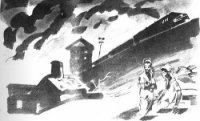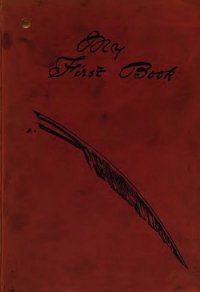Operation Nemesis: The Assassination Plot that Avenged the Armenian Genocide - Bogosian Eric (мир книг .txt) 📗
The “backward” Armenians became a focus of Protestant efforts at conversion. Though the Armenians had been practicing Christianity for over a millennium before Martin Luther nailed his Ninety-Five Theses to the door of All Saints’ Church in Wittenberg, the American missionaries saw them as souls in need of saving. Nine hundred years earlier they had aligned themselves with the Crusaders, or “Franks,” and this created another link to the West.
Neither as elaborate as Roman Catholicism nor as austere as Protestantism, the ancient Armenian Christianity was nothing like the faith of the earnest preachers arriving in steamships from America. The missionaries wanted to overwhelm this “crusty ritualism” with the undeniable light of their truth. They “hoped that their idea of individual repentance and obedience to God would be more attractive than Gregorian ceremonies.”14 One prominent Protestant writing in 1854 called the Armenian Apostolic Church “a miserable counterfeit of Christianity” and “that degenerate Church,” adding the punch line, “There is no essential difference between an Armenian and a Roman mass.”15
Christians had come to “save” other Christians (including Greeks and Assyrians). “Though they were barely aware of it, American Board personnel were a liberal force in the Ottoman domains, with as much potential for disruption as for renewal.”16 In hindsight, it’s easy to blame the fervor of the missionaries for nurturing revolutionary spirit in Christian Anatolia. “They came with arguments, tracts and funds. Their purpose, they said, was to infuse vitality and spirit into the unprogressive and dormant eastern Christian communities.”17 They preached from their pulpits, and, more important, the missionaries built schools and hospitals. Colleges that exist to this day were founded all over the Middle East. The Muslims avoided the Christian schools while the Armenians embraced them. Along the way, they not only became educated in the teachings of Christ but also became exposed to the world beyond their hardscrabble existence. Wealthier students like Armen Garo headed to Europe for higher education and returned full of liberal ideas of progress and even revolution. The missionaries were a full-service institution, bringing not just the Bible to the desperately poor Armenians but literacy, doctors, teachers, and agitation. By teaching the Armenians to read and by disseminating a modern form of Christianity that preached individual salvation rather than deliverance through clerics, the missionaries were not only disruptive but also became a thorn in the side of the established Armenian Church hierarchy.
Because the United States had not yet entered the war (and in fact never declared war on the Ottoman Empire), its diplomats, missionaries, and doctors were allowed to remain in the country, and were able to bear witness to what was going on. Their accounts have appeared in various forms: in Viscount Bryce’s volume The Treatment of Armenians in the Ottoman Empire, 1915–16 (known as the Bryce “Blue Book”), the Reverend James L. Barton’s compilation of missionary reports, and individual memoirs by others stationed all over Turkey.
Myrtle O. Shane, a missionary, attested:
During the first two days after leaving Diyarbakir we quite frequently saw bodies on or near the road. Some of these had apparently been killed while trying to escape. Others had been stripped of their clothing. In many cases the bodies were terribly mutilated. In one place we passed three lying near together. The faces had been so mutilated that no features were discernible and the bodies were one mass of gashes. Once our driver had to turn the horses aside in order to avoid running over a body which lay across the road. We saw a dog standing over one corpse and as we drew nearer could see that it had already gnawed a part of the flesh from the bones.
Another witness told the Reverend George P. Knapp that “she saw fifty men near the road forced to lie down on their backs in a row, their hands and feet bound. Then a butcher proceeded to cut their throats one after another, each man knowing when his turn would come.”18
Missionaries from different countries would often work together toward a common Christian goal of helping the unfortunate. A Danish missionary, Maria Jacobsen, a member of the Women Missionary Workers (Kvindelige Missions Arbejdere), kept a diary while in Kharpert. On May 30, 1915, she reports: “From other places we hear of terrible ill-treatment. It is said that in one place 13 Armenians have been crucified, nails being driven through hands, feet and chest. In Severek the old minister has been crucified.” On July 29: “Last night about 100 Armenians were sent away from Harpoot, but they reached no further than the spring, two hours walk from the town. Here the soldiers started shooting.” On August 7: “They do not make such great efforts now. They just take them outside the town and kill them. It would be more merciful if they took them as far as the river to drown, instead of torturing and flogging them to death.” On August 14, 1915, Jacobsen visited the local Armenian cemetery, where the dead and dying were dumped. As she entered the grounds, Turkish soldiers standing guard outside told her, “You cannot stand this.” She entered with the American missionary Henry H. Riggs and the American consul.
The large area was filled with the sick, but these poor ones no longer looked human. Not even animals could be found in such a condition. People would have had mercy on them and killed them, but these were the hated Christians—now in the hands of their enemies—who intended to make it as difficult as possible for them. As soon as we entered the gate a crowd gathered around us. All who could move jostled each other to come close enough to beg for money—ten paras for bread.… They were dirty, with unkempt hair, and as thin as the people who died of starvation in India. Beside this, they were ill and black with flies. Many were too ill to rise and follow us, but they tried to sit up and they cried for help. Others were even too weak to cry after us, only raising their heads to see what all the stir was about them. Half naked women lay around and one could not tell if they were alive or dead. Two little girls nine or ten years old, were dragging away the corpse of a six year old boy.
On the same day she wrote: “In Hooiloo all women were gathered together and killed. The men had been killed earlier. The women were ordered to remove their best clothes, and they were laid on top of each other, two by two, and beheaded.” On October 2 she wrote: “The Consul went to Kezin Khan and said that the corpses of Armenians are lying so thick on the main road that there are too many for the animals to eat. How frightful it must be for those now being sent away, to see their brothers and sisters lying dead on the road.”19
Leslie Davis was the American consul stationed in Kharpert. In the 1980s Susan K. Blair, a diligent American researcher working in the United States National Archives, managed to retrieve his misplaced report after much digging. The report, which has since been published under the title The Slaughterhouse Province,20 is a horrific indictment of the Ottoman government. In a letter to Ambassador Morgenthau, Davis states: “The term of ‘Slaughterhouse Vilayet’ which I applied to this Vilayet [Kharpert] in my last report… has been fully justified by what I have learned and actually seen since that time.” Davis, an athletic and deeply ethical man, rode on horseback for five hours to Lake Guljuk to see for himself what others had described. His descriptions and photographs of corpses and killing fields are like scenes from the most gruesome horror film. According to Davis, caravans of deportees were led into the remote valleys and dispatched in the thousands.




